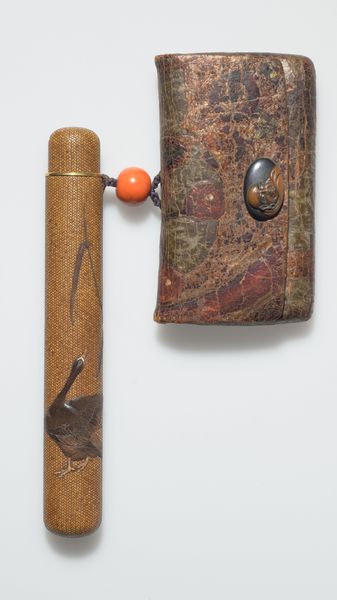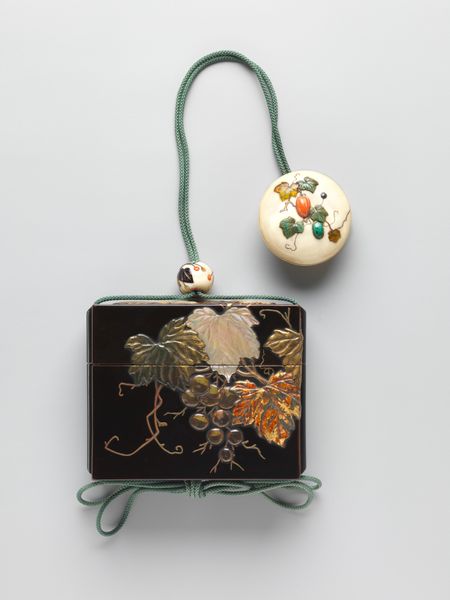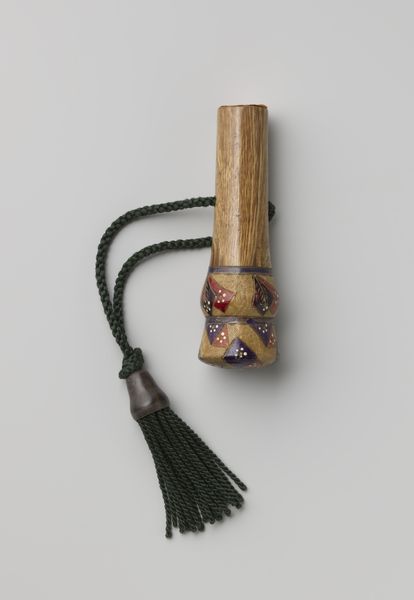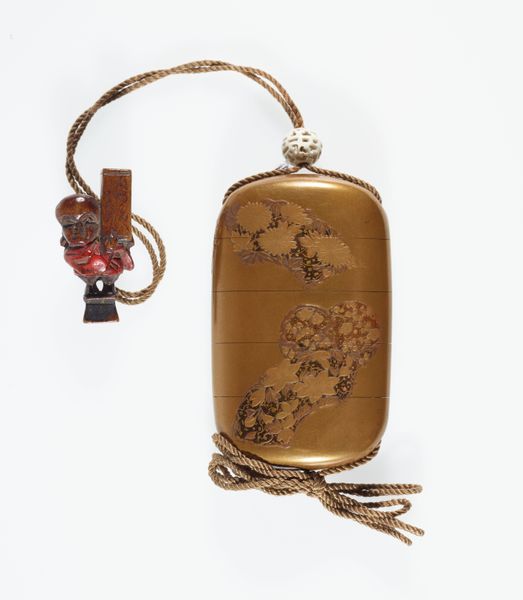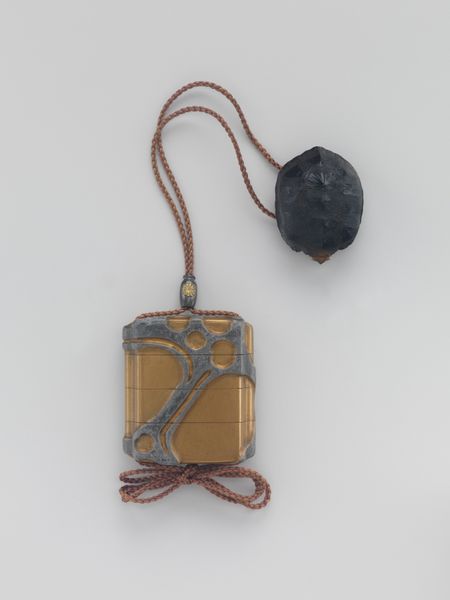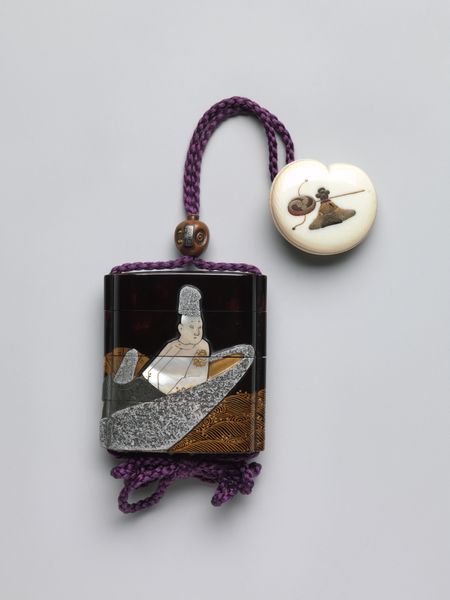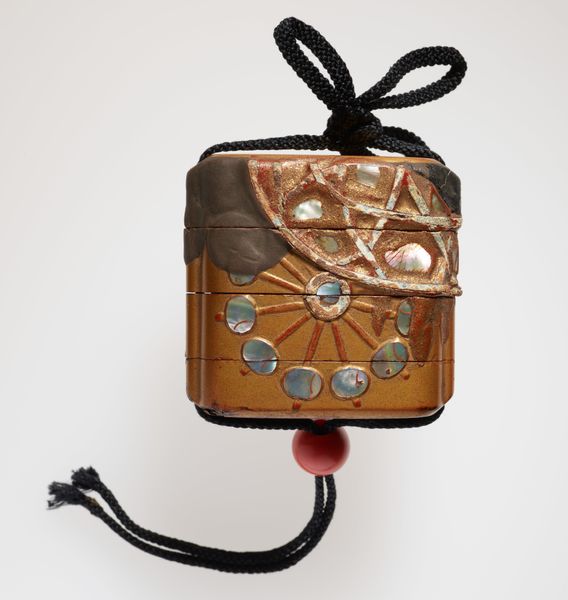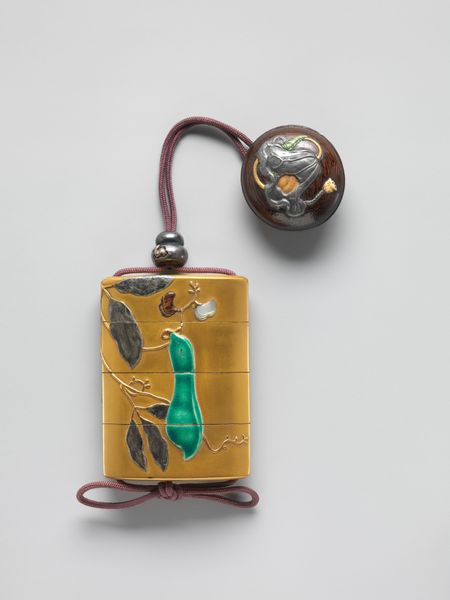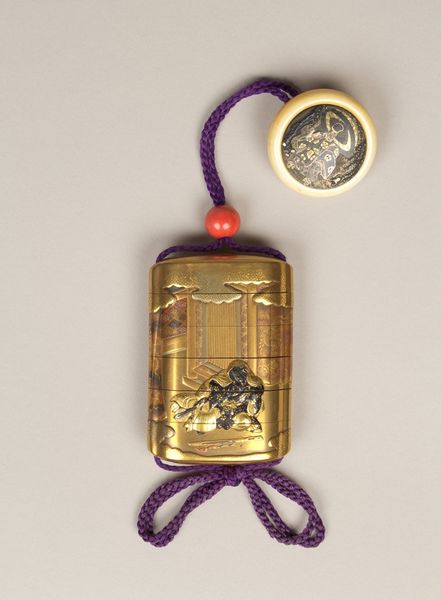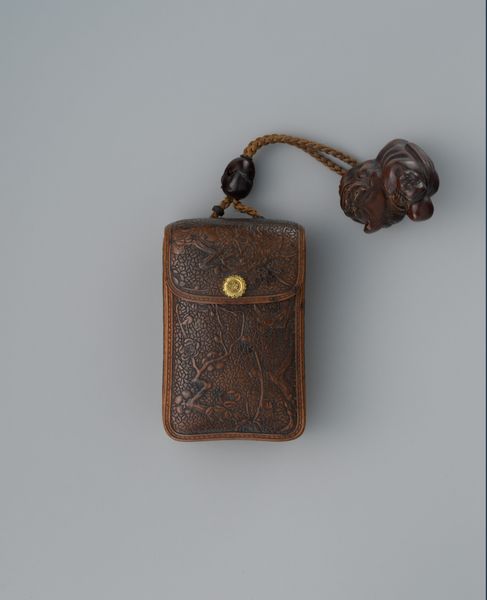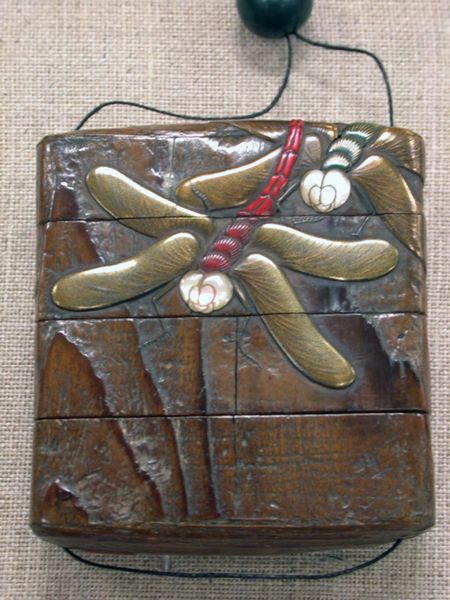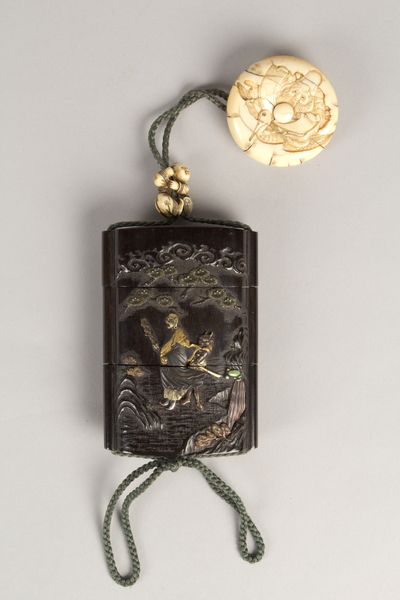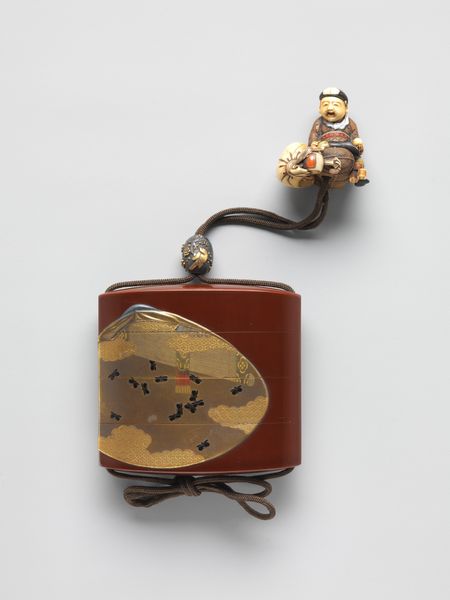
Single compartment inro adorned with auspicious symbols and persimmon ojime c. 1820s
0:00
0:00
mixed-media, intaglio, wood
#
mixed-media
#
intaglio
#
asian-art
#
wood
#
decorative-art
#
miniature
Dimensions: 2 3/16 × 2 5/8 × 1 in. (5.56 × 6.67 × 2.54 cm) (object part, inro only)7 1/4 × 2 5/8 × 1 in. (18.42 × 6.67 × 2.5 cm) (overall, including cord)
Copyright: Public Domain
Curator: This object presents an intriguing case of contained elegance. We're looking at a single compartment inro, likely crafted around the 1820s. It is currently part of the Minneapolis Institute of Art's collection. The piece is primarily crafted from wood, showcasing mixed-media inlay and what looks to be intaglio work. Editor: My initial impression is one of delicate complexity. The piece exudes a certain earthiness through its dominant wood tones, yet the meticulously placed embellishments hint at affluence and refinement. Curator: Precisely! The inro served a practical function in Edo-period Japan, acting as a portable case for medicines or seals, secured by a cord and ojime. But let's not overlook the formal qualities: the contrast between the plain wood and detailed ornamentation. Notice the division into what appear to be symmetrical registers, playing with shape and void. The circular ojime punctuates the composition vertically. Editor: The symbolic nature also bears consideration. Although difficult to identify definitively without specialized knowledge, the motifs appearing on the piece seem auspicious. The very act of creating this item reflects a society steeped in specific rituals, as these types of inro would signify their carrier’s social standing. It subtly reinforces class structures through meticulous craftsmanship. Curator: From a structural standpoint, the surface decoration complicates an otherwise simple cylindrical form. The choice of colors–the ochre shades, metallic accents, and singular red dot–demands closer scrutiny as an integral compositional arrangement rather than mere applied embellishment. I would analyze its impact from top to bottom and ask how would the entire effect change if you altered the placement of the ojime, or replaced it with another geometrical form of different color? Editor: I agree, the choice and arrangement of these small details would play a huge role in signaling the inro carrier's status in Japanese society. So, while appreciating its aesthetic value, we must understand these objects as both art pieces and vital cultural signifiers in the Edo-era society. Curator: Exactly. Analyzing these material interactions provides a foundation for understanding their visual syntax and internal mechanics, and as well it reveals how viewers decode meaning. Editor: So beyond just appreciating a beautiful little container, considering it in its societal context expands our knowledge, revealing its function and highlighting art as a visual articulation of identity.
Comments
No comments
Be the first to comment and join the conversation on the ultimate creative platform.

